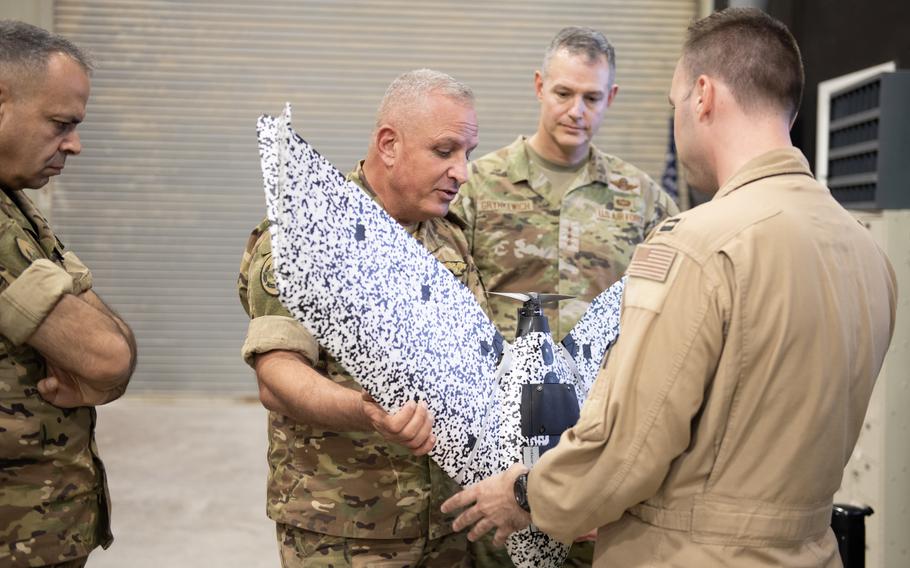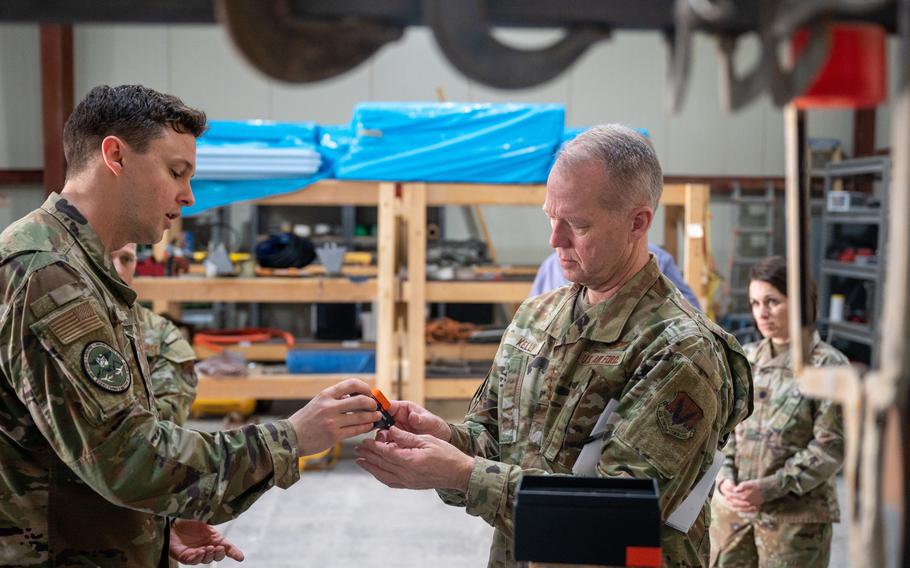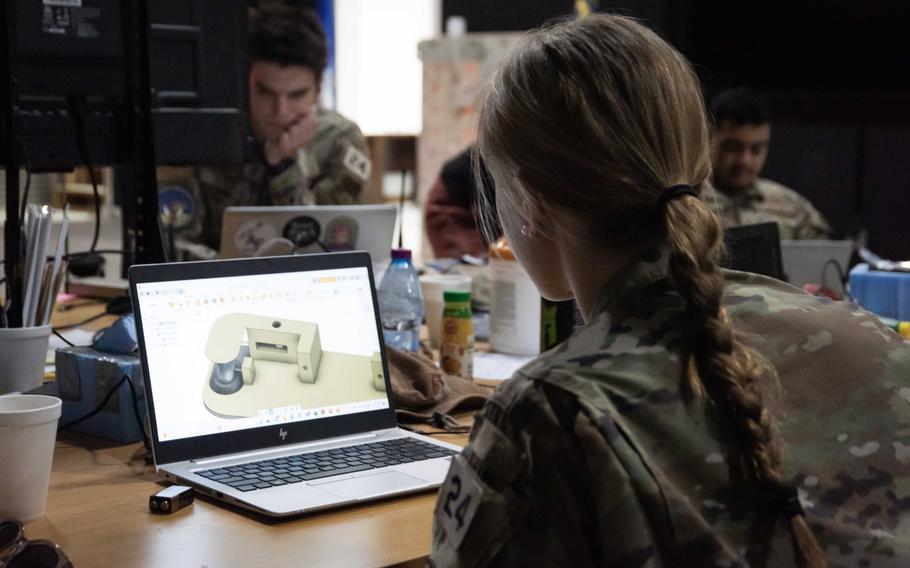
A U.S. Air Force Task Force 99 airman, right, briefs Lebanese Armed Forces Brig. Gen. Michel Assad Al-Saifi, Air Force commander, center, during a tour of the TF-99 facility during a visit Sept. 22, 2023, at Al Udeid Air Base, Qatar. (Jennifer Zima/U.S. Air Force)
The Air Force’s technology-testing detachment in the Middle East has begun flying inexpensive 3D-printed drones, which are being produced as similar systems have become relied on by Russian forces in Ukraine.
Task Force 99, based at Al Udeid Air Base in Qatar, has made the Kestrel aerial system part of the Pentagon’s push to put thousands of drones in its inventory within two years.
The Kestrels are “probably the highest-technology piece that we have put into operational use so far,” Air Force Col. Mark Whisler, the task force’s commander, said in a phone interview Monday.
The drones currently do not carry munitions, Whisler said.
The unit is still researching what kind of payload the drone can carry and how to extend its range, possibly through solar power, Whisler said. Each drone costs about $2,500 to produce, he added.
Whisler’s comments came a few weeks after Lt. Gen. Alexus Grynkewich, top general for the Air Force in the Middle East, told reporters that Task Force 99 was looking into one-way attack drones.

U.S. Air Force Gen. Mark Kelly, commander of Air Combat Command, right, participates in a demonstration with Task Force 99 airmen at Al Udeid Air Base, Qatar, Feb. 11, 2023. (Andrew Britten/U.S. Air Force)
Also known as loitering munitions, these low-cost, explosive drones have been used by Russia against Ukrainian troops and by militant groups against U.S. bases in Syria.
One-way attack drones like these targeted U.S. troops at al-Asad Air Base in Iraq on Wednesday, U.S. defense officials said.
The Kestrels could carry explosives or electronic jammers, Grynkewich said in his speech at a Defense Writers Group event on Oct. 4.
The Air Force started Task Force 99 last fall with the goal of field-testing unmanned systems and artificial intelligence technologies in the Middle East.
The unit has 15 airmen and a fleet of about 100 drones either in its inventory or on order, Capt. Susan Penning, a spokeswoman for U.S. Air Forces Central, said Tuesday.
But the task force “doesn’t have the ability right now to scale, to operate thousands of these capabilities,” Grynkewich said.
Whisler, who took over the unit about a year after it was founded, said he’s been charged with figuring out how to help Task Force 99 shift from testing to helping troops in battlefield operations.

U.S. Air Force Academy cadet Leah Watson creates a 3D model at Task Force 99, Al Udeid Air Base, Qatar, June 22, 2023. Watson worked at the task force as part of the academy’s cadet summer research Program. (Jennifer Zima/U.S. Air Force)
“We’re not just about innovation or just a hub of innovation, but we’re an operational task force that’s fueled by innovation,” Whisler said.
The task force has started testing balloons and high-altitude, long-distance surveillance systems.
The big challenge will be increasing the task force’s drone count, Whisler said. The unit’s 3D printer isn’t enough to fill the need, so the airmen are looking into commercial, off-the-shelf products.
Whisler is assessing the unit’s composition as well. He noted that he’s the first pilot to helm the task force.
Grynkewich has said some of the task force’s drones will be meant for offensives. Currently, most of the troops in the task force are airmen from the cyber systems, communications or engineering fields.
“That may not be what we need in the future for the success of this team,” Whisler said. “I’m just taking a more worldly look at this and seeing how we grow this the right way, versus the most rapid way,” he said.